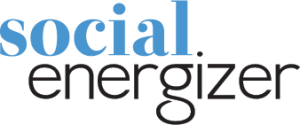SEO Explained through Analogies
SEO (Search Engine Optimization) can be daunting stuff. It’s the sort of topic that makes one’s eyes glass over and can put the worst insomniacs to sleep. BUT it is one of the four most important elements to Inbound Marketing and is often not understood.
Many consider it the magic behind the curtain. It is not magic –not really. It’s the logical process of improving visibility of a website or web page in search engines without paying for it. When done correctly it can work like magic and is the key to getting found online.
I always like to use analogies when describing concepts like SEO. Explaining complicated ideas is often made easier when tied to something familiar.
Think of Google as an American Idol contest, with lots of fledgling talent: some wannabees, a few already working professionals and some previously unknown and untapped artists -all waiting to ‘get found’. The Google engine is Simon Cowell (I know Simon is so –last year, but to me, he’s still ‘Idol’). He has lots of experience measuring talent. He knows what to look for, how to assess it, and compares each one to the other. Once he decides his top picks he places that influence on others, ruling the American Idol world.
While researching for this article, I found a couple analogies from Aaron Wall’s blog SEOBook. Here are my favorite SEO analogies of Aarons:
Link Reputation
- search engines follow people – helps explain why new sites tend to not rank well, and how links are seen as votes.
- roads and highways – used to describe PageRank and why some votes count more than others.
- multiple audiences – used to describe why many types of content are needed to address different audiences, and the importance of creating content that is loved by buyers, linkers, and search engines.
- rising tide lifts all boats – used to describe how links to one part of your website help other pages on your website rank better
- pet rocks & overpriced dolls – describing how perception becomes reality when describing cumulative advantage, and how some poor quality sites are popular while better content remains hidden
On Page Content
- fish and a fishing pole – when explaining how text heavy sites often outrank thin ecommerce sites, I like to call searchers fish and each word on the page an additional fishing pole in the water. This is really powerful when used in combination with analytics data, showing her the hundreds of phrases that people searched for to find a given page on her site…helping her see the long tail as schools of fish.
- Don’t Make Me Think – people scan more than they read. Large blocks of text are imposing. People are more likely to read well formatted content that uses many headings, subheadings, and inline links. Expect people to ignore your global navigation, and do whatever you ask them to do (via inline links).
Site Structure
- Broadway Street in Manhattan – used to describe the value of descriptive .com domain names, and when describing what top search engine rankings are worth.
- a pyramid – when explaining how some phrases are more competitive than others, and how to structure a site.
- chapters of a book – used to describe the importance of focused page titles, and how to structure a website.
Do you have a favorite analogy to explain SEO? Was this helpful? Let me know what you think.
Social Energizer’s purpose is to help companies develop lasting relationships with their customers and increase their conversion rates by adding proven online marketing techniques to their marketing mix.
We do this by integrating inbound marketing techniques into each business’s current marketing plan and by utilizing digital channels and strategies like Blogs, Twitter, Facebook, LinkedIn, Search Engine Optimization, and Web-integrated Email Campaigns.
We invite you to comment and rate each blog, so we can ever improve our offerings to you.



This is a great explanation. Now I will always think that good SEO is like “Simonizing” your website!